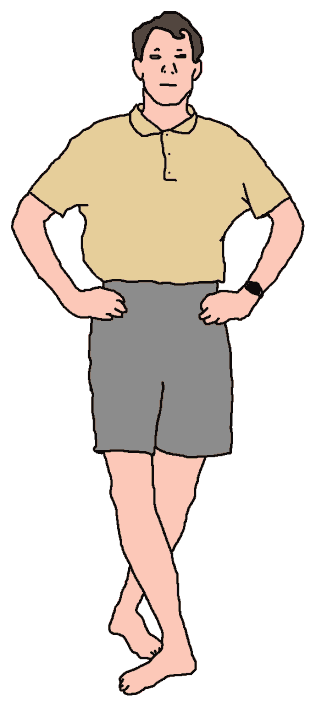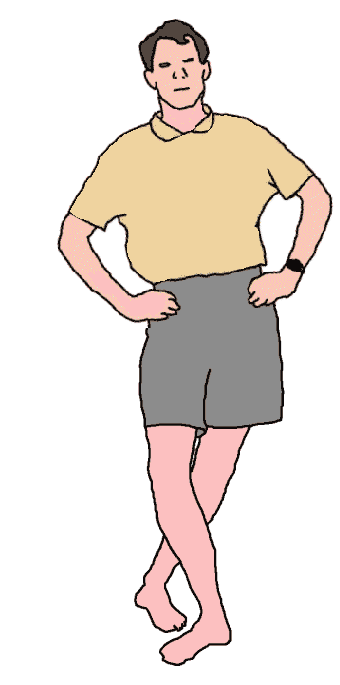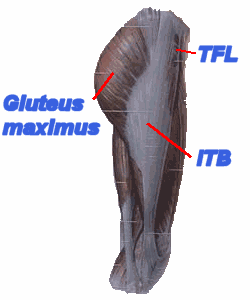|
|
|---|
Standing Tensor Fascia latae (TFL-ITB) Stretch:- Start Position
- Stand with your left toe touching your right heel and your feet at right angles to eachother.
- Place your hands on your hips - use your hands on your hips to remind you that the side bend is applied
to the hip joint, & not to the lower back.
- Pelvic Neutral
- Anchor your scapulas.
- Chin gently tucked.
Standing Tensor Fascia latae (TFL-ITB) Stretch:- Action
- Maintain zip and hollow and breathe in.
- (Breathing out): Lean to your right, with the movement happening in the hip joint.
- Hold, and breathe in. Feel the stretch in the TFL muscle at the side of the hip bone,
(it should be under your left hand).
- Hold the stretch for 2 breaths.
- (Breathing out): Return to upright.
- Five times each leg!
- Walk a few steps to let the TFL relax back to normal length.
(Tensor Fascia lata (TFL-ITB) Stretch Scroll right>>>...)
|
Pictures: TFL-ITB Stretch (Standing) -
|
Start Position:-

Action:-

|
Picture: The TFL and related structures:-

What the Standing Tensor Fascia latae Stretch does-
- Stretches the Tensor fascia lata and Iliotibial band.
Watch Points for Tensor Fascia latae Stretch:-
- Maintain a strong "zip and hollow".
- Do not side bend at the abdominal level!
- Maintain scapular anchor.
|
|
Comments
The Tensor fascia lata tends to:
- become the dominant hip flexor for forward knee drive when walking and running
(this should be the work of the Iliopsoas and Sartorius muscle groups).
- become the dominant lateral fascia tensioner during stance phase of gait (it should actually share this
function with the Gluteus maximus)(3).
As a result, it becomes overworked, and tires easily; it shortens and looses its fine control.
The imbalances in muscle force and length
patterns around the upper thigh lead to "hip medial rotation" and/or "hip adduction syndromes(1).
A "lesion based" diagnosis labels these conditions "trochanteric bursitis" and Iliotibial band friction syndrome"(2). See Lying Iliotibial band stretch for further comments.
Reference
- Shirley A Sahrman: "Movement Impairment Syndromes" Publ. Mosby, 2002
ISBN 0-8016-7205-8
- Bruckner P, Khan K: "Clinical Sports Medicine", Second Edition. Publ.
McGraw-Hill Australia 2001. ISBN 0 074 71108 3
- Bruce Thomson Engage Gluteus maximus!
(tensor fascia latae stretch © Bruce Thomson, EasyVigour Project
scroll up^^^^....)
|